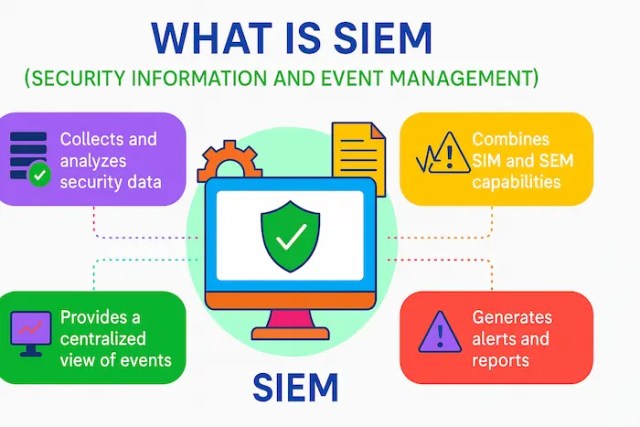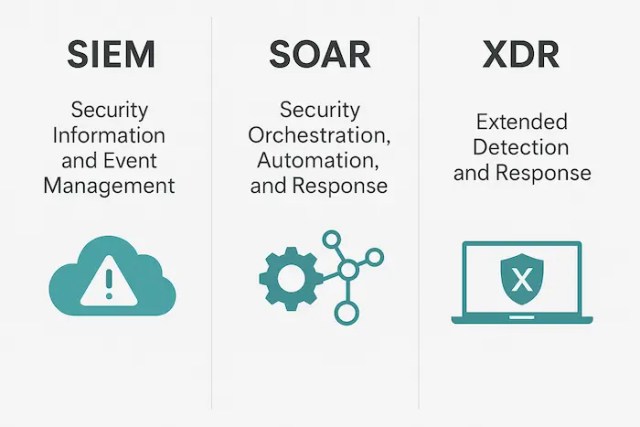- Email: info@craw.sg
- Phone: +65 9797 6564

XDR: Could you please provide a comprehensive explanation of its nature and characteristics? Does it render the necessity of SIEM and SOAR obsolete? What attributes should firms prioritize when selecting an Extended Detection and Response (XDR) solution? This essay aims to answer commonly raised concerns and provide guidance to security professionals in navigating a complex and saturated market of solutions. However, it is imperative to begin by presenting essential background knowledge before delving into the intricacies of these systems.

The subsequent phase in the advancement of endpoint detection and response (EDR) is referred to as Extended Detection and Response (XDR). XDR utilizes a holistic methodology for identifying and addressing potential threats, which optimizes the processes of data intake, analysis, preemptive measures, and remediation throughout an organization’s whole security infrastructure. The utilization of XDR’s unified interface enables security teams to efficiently detect concealed and intricate threats. This comprehensive platform facilitates the visualization and prompt response to threat data while also automating intricate and multifaceted activities inside its security infrastructure. The two predominant subtypes of XDR are Open XDR and native XDR.
Due to the aforementioned characteristics, the use of XDR yields substantial enhancements in threat detection capabilities, expedites security operations, reduces total cost of ownership (TCO), and alleviates the persistent burden on security personnel.
ShieldXDR is an efficient security solution that makes use of state-of-the-art technology such as artificial intelligence (AI), machine learning (ML), and behavioral analytics to quickly detect and get rid of complex threats.
By combining cloud, network, and endpoint security into one platform, it offers a comprehensive approach to threat identification and reaction. Businesses can respond quickly to any security event that may occur at any time from any remote hacker sitting anywhere in the world, since Shield XDR provides monitoring and notifications 24X7.
Shield XDR’s cutting-edge endpoint security technology guards against malware, ransomware, and other contemporary threats that could compromise endpoints. The use of AI and ML algorithms enables real-time detection and reaction to zero-day attacks. Furthermore, ShieldXDR from House of Craw Security stands out from a number of other XDR solutions on the market that charge more and provide fewer services in comparison to the price, thanks to the following important features:
Increased Visibility and Efficiency
XDR systems provide a single view of security data across servers, networks, endpoints, and cloud environments. This improved visibility allows security professionals to detect threats faster, eliminate blind spots, and respond more skillfully by connecting events from several sources.
Alert Management
Effective alert handling in XDR platforms prevents security analysts from being inundated with false positives and instead informs them of actual dangers. Advanced filtering, prioritization, and aggregation tools expedite the alert review process, increasing incident management speed and accuracy.
Automated Tasks
Automation in XDR simplifies repetitive security tasks like threat hunting, alert triage, and early incident response. This reduces the manual workload, expedites response times, and ensures consistency in security operations.
An integrated response across multiple security tools
XDR systems coordinate activities across several security products (firewalls, EDRs, SIEMs, cloud security solutions, etc.) to ensure a coordinated response. This integration streamlines workflows and allows for the rapid and automatic containment and remediation of hazards across the whole organization.
AI-Based Detection
Artificial intelligence and machine learning in XDR systems enhance threat detection by identifying advanced persistent threats (APTs), aberrant patterns, and zero-day attacks that traditional signature-based methods may miss.
Dark Web Monitoring
XDR solutions monitor discussions on dark web sites on targeted attacks, compromised credentials, and leaked data. By identifying such activity early on, organizations can take preventive action before a breach impacts them.
Real-Time Threat Intelligence Feeds
XDR systems ingest live threat intelligence feeds to deliver up-to-date information on malicious IPs, domains, indicators of compromise (IOCs), and new threats. This enables proactive defense and faster identification of potential threats.
Asset Management
XDR helps companies manage vulnerabilities, monitor assets, and respond quickly to events that affect specific resources by maintaining an up-to-date inventory of all endpoints, servers, and devices.
Local Data Breach Monitoring
By identifying and reporting any unauthorized access or exfiltration of sensitive data within the organization, the system enables prompt response to manage and address breaches at the earliest stage.
Incidence Response
XDR’s end-to-end incident management capabilities, including playbook-driven reaction, automated investigation, evidence collection, and comprehensive reporting, enable quick and well-organized handling of security incidents.
Full Assistance in Compliance
ShieldXDR offers comprehensive support for fulfilling the prerequisites for several top-tier certifications and frameworks, including:
Built-in DLP Protection
XDR solutions usually include DLP features to detect and stop unauthorized transmission of sensitive data via email, web uploads, portable media, or cloud services to protect private information.
USB/ Pen Drive Monitoring
Built-in device control features assist in preventing virus introduction, undesired data transfers, and data leakage through detachable devices by monitoring and restricting USB and other external media.
Screenshot Monitoring
XDR platforms can identify or prevent unauthorized screenshots, safeguarding confidential on-screen information and preventing accidental or intentional data exfiltration.

Security information and event management (SIEM) is a comprehensive framework comprising a range of tools and services designed to facilitate the analysis, understanding, and preparation for potential threats by security analysts. This framework integrates the functionalities of security events management (SEM) and security information management (SIM) to enable efficient retrieval and reporting of log data.
SIEM enables organizations to do real-time data evaluation from various network devices and apps. This capability can assist organizations in proactively identifying potential security vulnerabilities prior to their potential disruption of routine business activities.

The development of a suite of software tools known as Security Orchestration, Automation, and Response (SOAR) has been undertaken with the aim of enhancing an organization’s cybersecurity stance. A team of security analysts has the capability to oversee security data from various sources, including security information and management systems, as well as threat intelligence platforms, by utilizing a Security Orchestration, Automation, and Response (SOAR) platform.
SOAR functionalities:
The primary goals of a Security Orchestration, Automation, and Response (SOAR) platform encompass the collection of threat-related information and the implementation of automated measures to counteract these threats. The utilization of a SOAR platform has the potential to enhance the efficiency and responsiveness of security teams.

SIEM
The primary purpose of Security Information and Event Management (SIEM) is to collect logs to facilitate compliance, store data, and conduct analysis. The effectiveness of risk identification is limited in security analytics without the implementation of a distinct security analytic function in conjunction with substantial data collection. Currently, security analytics is primarily integrated into SIEM solutions as an additional feature rather than being developed as an independent capacity.
SOAR
As previously said, the integration of Security Information and Event Management (SIEM) with SOAR facilitates the coordination of orchestration, automation, and response functionalities. This integration enables diverse security technologies to establish effective communication channels among themselves. Nevertheless, the SOAR framework commences and concludes with a form of communication that occurs in both directions. Although the SOAR system is undeniably valuable, it does not comprehensively tackle the challenges posed by big data analytics or offer sufficient safeguards for data and system security.
XDR
XDR has emerged as a distinct approach to address the void created by SIEM and SOAR, employing a novel technique centered around endpoint data analysis and optimization. The organization is able to prioritize and promptly address incidents of utmost importance due to the advanced analytical capabilities of XDR.
XDR has emerged as a distinct approach to address the void created by SIEM and SOAR, employing a novel technique centered around endpoint data analysis and optimization. The organization is able to prioritize and promptly address incidents of utmost importance due to the advanced analytical capabilities of XDR.
About SIEM, SOAR, and XDR
1: What is the relationship between SIEM and SOAR?
In numerous instances, the combination of Security Orchestration, Automation, and Response (SOAR) and Security Information and Event Management (SIEM) is employed. The two platforms exhibit a complementary nature and possess the capability to collaborate synergistically in order to enhance the effectiveness of your security operations. This collaboration may be achieved through a two-step approach.
In the realm of cybersecurity, the primary purpose of a Security Information and Event Management (SIEM) software solution is to collect and disseminate alerts to be subsequently examined by security experts.
The cooperation between SIEM and SOAR might be conceptualized as analogous to the relationship between an assistant and a manager. The identification of logs that meet the criteria for triggering alerts is accomplished by the Security Information and Event Management (SIEM) solution, which collects and analyzes logs in order to establish correlations. The Security Orchestration, Automation, and Response (SOAR) platform is capable of extracting data from the Security Information and Event Management (SIEM) system, subsequently facilitating the initiation of resolution endeavors.
Essentially, Security Information and Event Management (SIEM) offers log analysis and archiving capabilities that are frequently absent in Security Orchestration, Automation, and Response (SOAR) solutions. Although the Security Information and Event Management (SIEM) system does not possess response capabilities, the Security Orchestration, Automation, and Response (SOAR) system does offer such functionalities. In order to effectively utilize the data and insights produced by a Security Information and Event Management (SIEM) system, security teams would typically be required to utilize multiple interfaces external to the SIEM platform.
2: Is XDR a substitute for SIEM and SOAR?
The prompt reply is negative. Although XDR offers enterprises enhanced security capabilities and improved security measures, it is neither advisable nor feasible to entirely substitute SIEM or SOAR with XDR.
Due to the inclusion of other use cases, such as log management, compliance, non-threat-related data analysis, and administration, within the SIEM framework, it is evident that XDR cannot serve as a direct substitute for SIEM. Despite the fact that an XDR may frequently serve threat-centric use cases and hence replace SIEM in that regard, the business will still require the SIEM to meet other criteria.
Regarding SOAR, this platform offers beneficial orchestration capabilities that aid the security team in resource allocation and work prioritization. The absence of these features in XDR solutions underscores the need to maintain the operating status of the SOAR system and establish a connection with XDR.
3: Does my organization need all three tools: SIEM, SOAR and XDR?
However, it is possible that the reasons extend beyond mere security concerns. This post examines the diverse security characteristics of SIEM (Security Information and Event Management), SOAR (Security Orchestration, Automation, and Response), and XDR (Extended Detection and Response). It emphasizes the integration of these technologies to provide a comprehensive and dependable security solution while also addressing other use cases. Organizations face the potential of experiencing breaches and other security problems when they fail to prioritize any of these three essential competencies, which could also result in their inability to fulfill other business requirements.
In the bottom line, we would like to state that there are several XDR Solutions in Singapore that offer prominent features to all organizations that wish to check out their IT infrastructures from specialized penetration testers. In this regard, ShieldXDR, a unit of Craw Security, offers the world’s best XDR Solutions in Singapore.
To gather more info on the same or book a demo slot from our highly experienced and skilled penetration tester, give us a call at our round-the-clock call facility number, +65-97976564, and have an interaction.